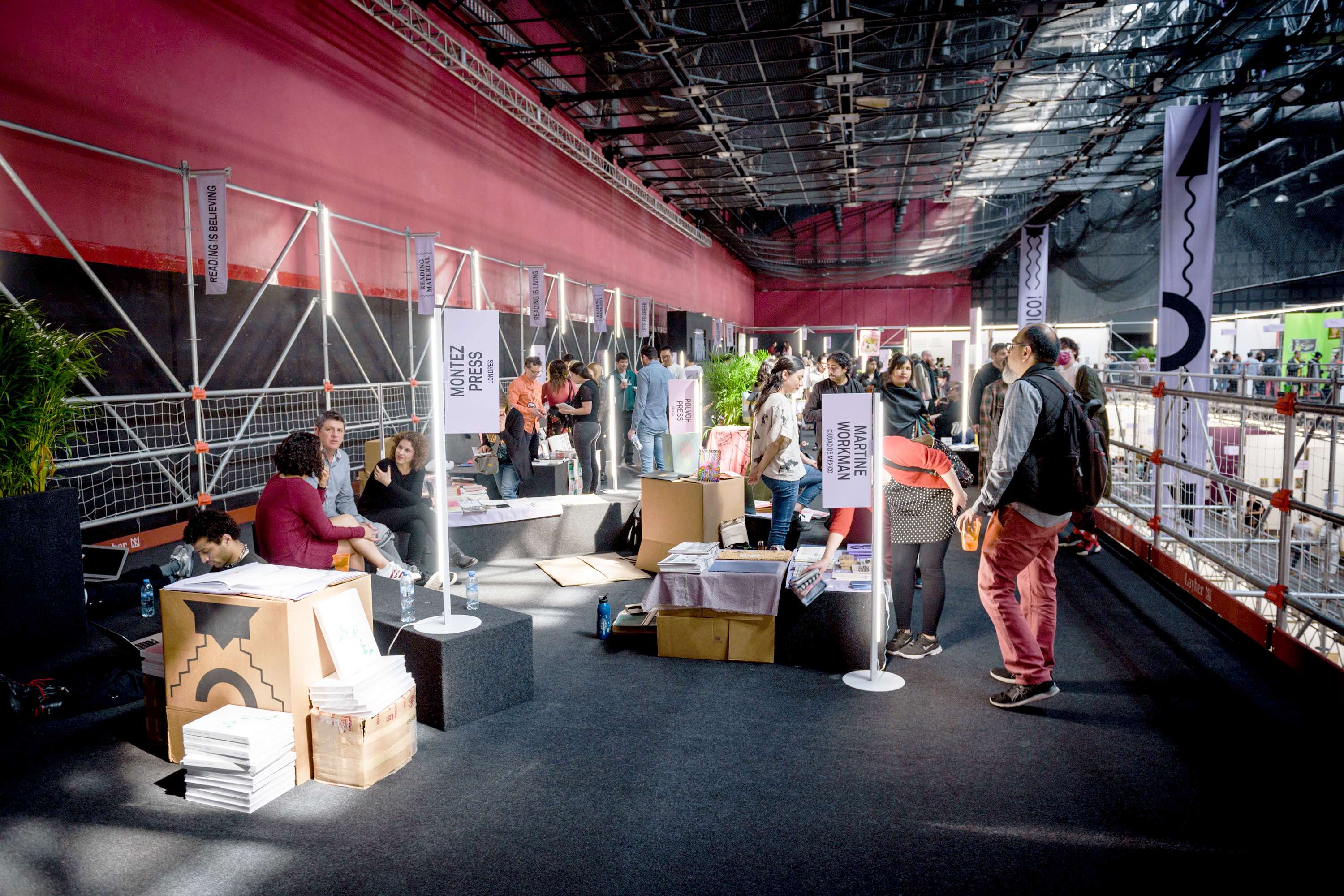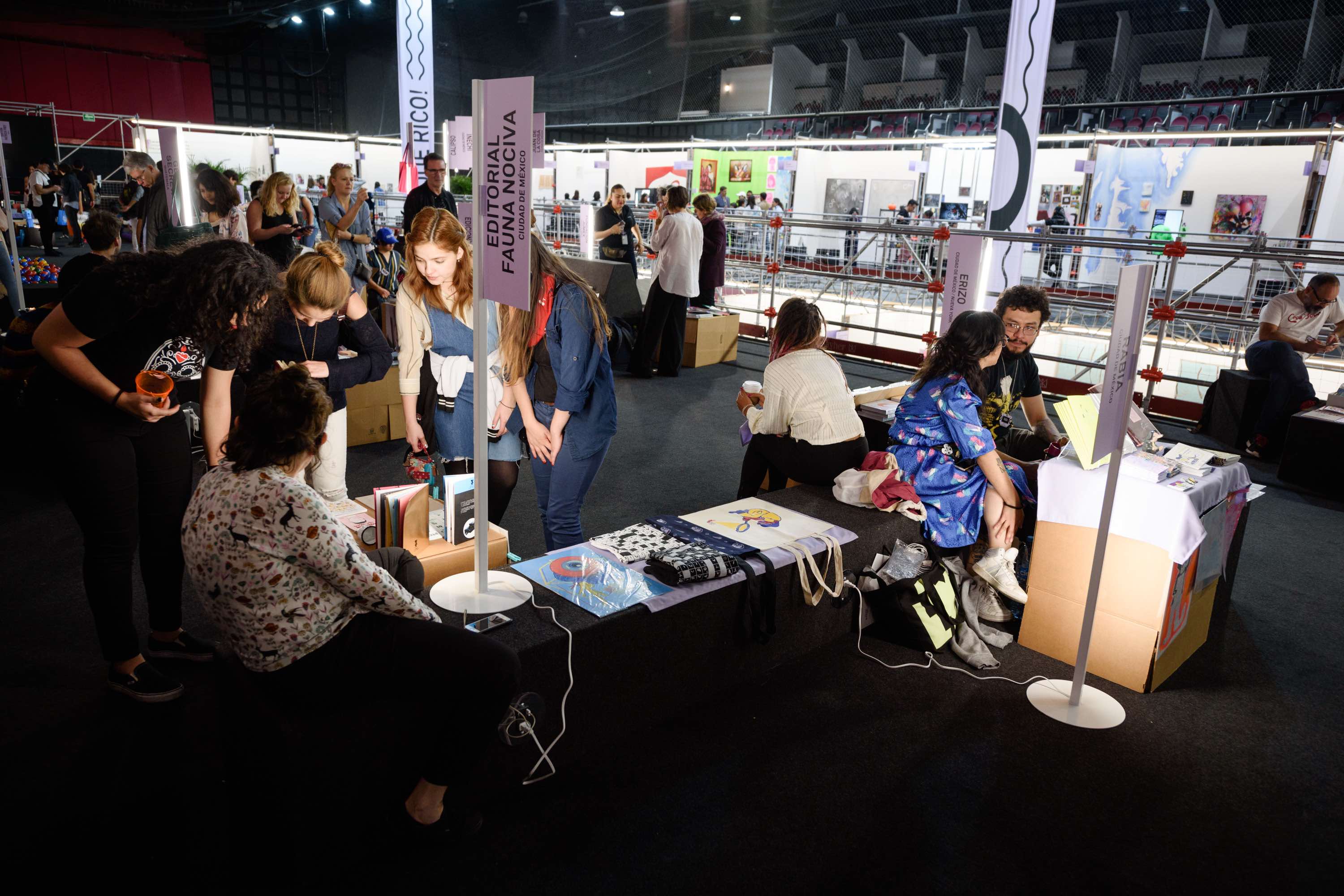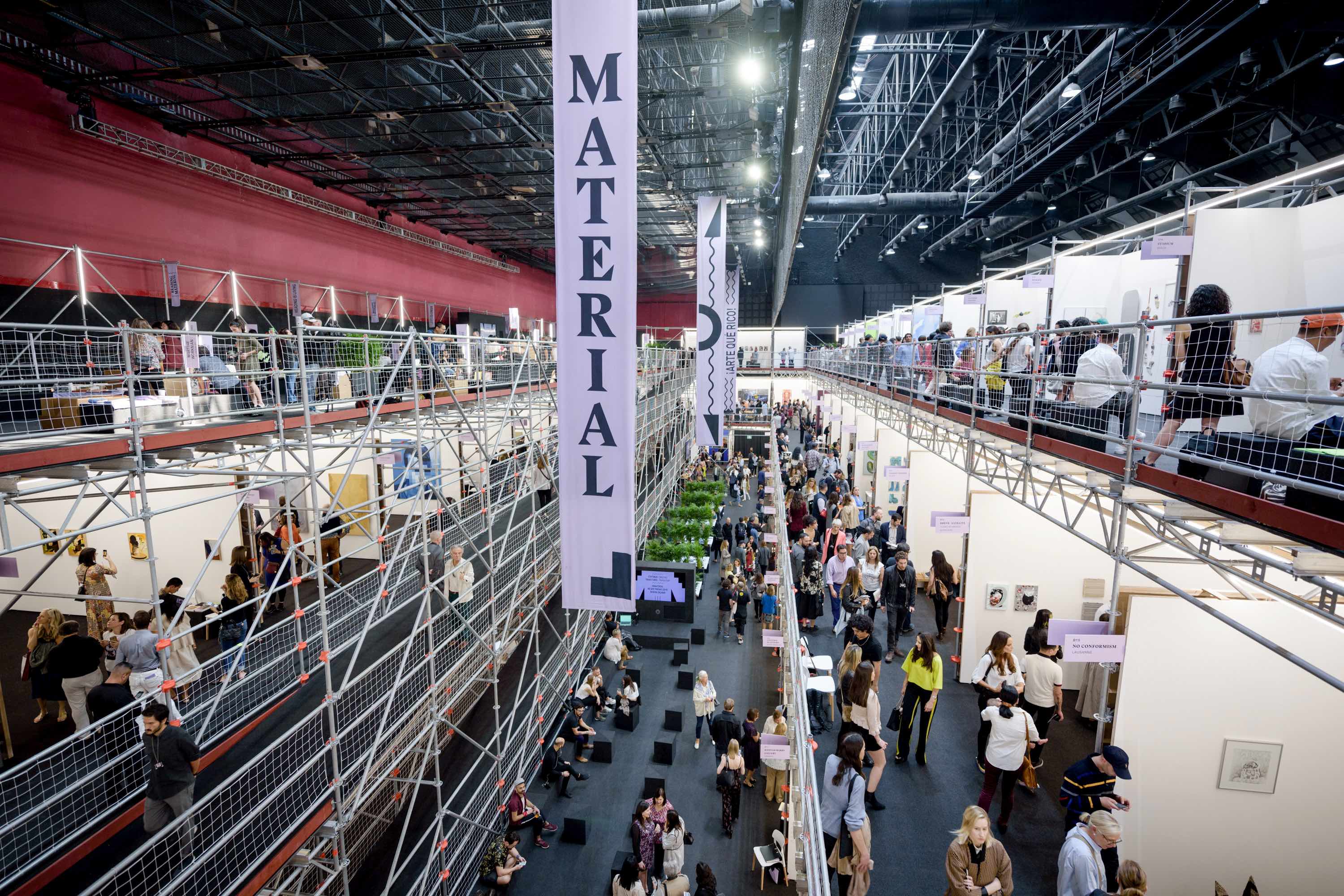
Article
Material 2020: An Art Fair for Looking, Listening, and Reading the Present
by Regina Díaz
Interviews with curators Eva Posas and Eric Namour
Reading time
8 min
From February 7 to 9 the Material Art Fair celebrates its seventh edition. This fair, the most festive of the fairs at Mexico City’s Art Week, began in 2014 and has never stopped growing. Now it boasts even more spaces and contemporary artists, which this year includes 78 galleries from more than 21 countries and 37 different cities, as well as artist collectives and nonprofit initiatives.
For the first time the fair welcomes the most important local galleries, such as kurimanzutto and OMR, both of which take advantage of the permissive and intimate space in order to exhibit the work of a single person. Kurimanzutto presents the work of Mexican artist Gabriel Orozco and OMR that of French artist Yann Gerstberger. In addition, there are such renowned global institutions as Serpentine Galleries and Whitechapel, both from London, as well as the gallery China Art Objects, formerly based in Los Angeles and recently relocated to Mérida, Yucatán.
Material 2020 continues to be both experimental and experiential; it is interested not only in objects, but also in ideas and in other media that challenge our present situation. It also includes three interdisciplinary programs in dialogue with the fair’s visual format: one dedicated to performance, another to book publishing, and yet another focused on sound.
Immaterial, curated by Michelangelo Miccolis, brings together national and international performance artists, all of whom carry out appropriations and filtrations in the space, generating chance experiences in the hallways and transit spaces both inside and outside the fair, including around the Monument of the Revolution. Immaterial brings us closer to Eastern Europe, boasting the work of Manuel Pelmus (Bucharest, Romania) and Kris Lemsalu (Tallinn, Estonia), the latter of whom is internationally known for her art-performance-sculptural pieces. For the fair, Lemsalu collaborates with the Mexican artist Bárbara Sánchez Kane (Mexico City) and with Kyp Malon (New York City). The program also features original commissioned works by artists Nikima Jagudajev and Adriana Lara.
.jpg?alt=media&token=9d3147df-6029-4e32-a63d-79d38f7773f0)
Reading Material, curated by Eva Posas, is a space dedicated to national and international art publications that aims to open up a dialogue with editors, artists, and gallery owners. Listening Material, curated by Eric Namour, is this year’s new addition. This program seeks to confront us with sound and to reflect on the position of music in contemporary art contexts.
Eva Posas and Eric Namour, Being - Speaking – Asking
I met Eva Posas at the Chiquitito Café in Cuauhtémoc. Without set guidelines, we talked about Reading Material. We also exchanged points of view, and she told me what most excited her about this year’s fair.
What drives our conversation are questions about the positioning of certain materials—for example, books or music—within contemporary art. There are already many very good book fairs; of interest is how to create a distinctive curatorial line for publications in a contemporary art fair. Eva tells me about how Reading Material emerged, and she explains that her work is based on a concern for the actions surrounding books:
Eva Posas: The performance side of publications is what lies before, after, and around a book. In order to publish a book, first you have to create a range of contents, but making those contents real already implies actions. And then, once you have a book, there’s the side of setting it off. Publications detonate encounters and situations.
Writing, editing, and publishing all involve processes filled with movements, strokes, and dialogues, always involving many voices. Last year saw the debut of Reading Material, and on that occasion Posas decided not to have tables, thus fostering another type of interaction, one similar in tone to the Kiosko editorial picnic, which she organized for the now-defunct Fundación Alumnos47. This year the program has a conventional format of tables and chairs. Nevertheless, the publications will be located next to the galleries and the artists in order to promote a direct conversation. Reading Material is an experiment in fantasizing about and living with other exhibition formats, all with the goal of using books as detonators:
E.P.: I’m very interested in finding the recesses where contemporary art uses publishing and publications as tools for distribution and even exhibition. I’m very fixed on seeing publications as another means of exhibition.
In retrospect, I think that Eva’s proposal is linked in tandem with a valorization of acts of care and of collective authorship. Reading Material recognizes the creative and vibrant act of producing and reading books, as well as their unprecedented power of distribution, making it so that contemporary art and artists are no longer inaccessible or incomprehensible. With publications hailing from Asia, Europe, and America, this curatorial line renders voices from different latitudes more perceptible.
There will be public conversations, such as the Sharjah Art Foundation Publishing Program, which will share practices and methods from the Middle East. Also coming will be Art Book in China, an Asian standard-bearer that will bring along a very comprehensive selection from the continent and that will hold a talk on Sunday February 9. In addition, one cannot miss the talk by Dispatches Journal, an initiative launched in 2018 by [NAME] Publications, and that explores the colonial and capitalist logics surrounding us.
From Mexico and Latin America, the fair presents the work of Terremoto, Gato Negro, and, from Ecuador, Terminal Ediciones. From the United States come projects focusing on queer activism and contemporary identities, as well as themes addressing material culture and participatory art.

Listening Material
I also met Eric Namour in a Chiquitito Café, this time in Condesa. I wore red, and he was a little sick, with his ears covered. In this season we all have runny noses, but that did not stop him from blissfully telling me about Listening Material.
Our talk took place among the everyday noises of coffee cups, spoons, sips, and voices. Sharing anecdotes, Namour spoke about the entry of music and sound curation in contemporary art. The rest of the conversation focused on music’s plurality and on the fair’s interest in it:
Eric Namour: In the eyes of curators and viewers, the music curator doesn’t exist. Sound enters the gallery thanks to the visual artist. I’m interested in how sound enters art, in the artistic space, its monetary and non-monetary value. I like to analyze how information circulates.
Namour began curating Listening Material without many expectations, but the fair supplied major backing and support so that this curatorial project could grow alongside the others. It was also arranged that the project would have its own continuous physical space within the fair. “I proposed to Brett [Schultz, the artistic director] that there could be a concert within the framework of Material. He raised it even higher,” he said.
Namour considers Listening Material to be part of a three-episode project supported by Jumex, called Sonido en Acción (“Sound in Action”):
E.N.: I’m doing my programming in three different events. The first was in December, and there was dance, performance, and talks. The interlude is next Thursday and it’s only sound, all black, a listening situation in the Ex Teresa. Afterward, the epilogue is in Material: sound in action.
The program can be consulted on the fair’s website, but here we let you know what will happen, straight from the curator:
There’ll be a vocal performance, which is commissioned by Nicho for Material and has many improvisatory elements. Then we have Rolando Hernández, with archival documentation. He’ll bring a suitcase and start talking about Latin American collectives. His reading is the least sonic part, but it has the most sonic message; I see it as a performance-talk-concert. On Saturday we start with the most contemporary. Diego Espinosa is going to be making five pieces, one of them political, about mermaids. Material will close with the Bruja de Texcoco (“Witch of Texcoco”). I also invited an orchestra, Sonidero 13, which adds a more performative element. The musicians will be in the space as living sculptures.

Listening Material seeks to give corresponding weight to sound by incorporating listening experiences in a context of multidisciplinary practices, without either competing with the visual or advocating for the category of sound art. The curatorial program is materialized from encounters and collaborations that Namour has managed in the past. This proposal aims to gather together and challenge new listeners to go beyond the current cultural atomization of sound and to discover yet newer proposals within multidisciplinary scenarios.
In the typical rush of an art week, with its umbrella of expectations and competitiveness at both national and international levels, any inclusion of the alternative is usually an implicit expression of responsibility by contemporary domains. But there is not always a true commitment to uprooting those formats that have already been validated or that are already profitable. The curation of Material is a process of experimental self-criticism that seeks to communicate and locate within the fair what is intangible, the encounters and talks that derive from creative and collaborative projects.
The fair’s infrastructure alludes to a space under construction, unfinished and ephemeral; Material encourages you to see with the ears, with the body, with letters, and with colors.

Published on February 1 2020